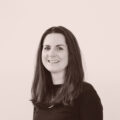What if… beauty brands could boost age representation, and unlock a forgotten audience?

What if… beauty brands could boost age representation, and unlock a forgotten audience?
The beauty industry has come a long way since its inception, but the idea of beauty is still all but synonymous with youth. Today, we’re just beginning to see the conventional goalposts shift, with the gradual inclusion of more skin tones, body shapes and genders. However, the representation of age in beauty still lags behind.
What’s the impact of failing to represent an older demographic?
Traditional ‘youth’ has been the go-to look for beauty for decades. Older age groups of women in beauty seem to be reserved for the ‘anti-aging’ movement of brands and products. These often focus on products with active ingredients like retinoids, ceramides or coenzyme Q10. What about all of the other products and brands that women in their 40s+ use that aren’t anti-aging?
There are signs that the tide is beginning to turn, as some beauty brands begin to incorporate a broader age range of models into their marketing. Neal’s Yard recently launched an “All Age Well” campaign which included customers who were hand-selected to share stories related to ageing, while “fast beauty” brand Revolution has teamed up with @alternativeageing blogger Suzi Grant. Cecred, Beyonce’s new haircare range is also much more in line with age neutral and inclusive.
By failing to represent an older demographic, beauty brands and retailers run the risk of isolating this audience, and we hypothesise this could be making them less likely to purchase.
As a result of beauty marketing being representative of much younger audiences, these brands are also exposing a much younger cohort to their products and messaging, particularly through platforms like YouTube and TikTok.
In some areas of beauty, this is beginning to be problematic. A growing number of children and teens are purchasing or asking for anti-aging beauty and skincare with Drunk Elephant being the most notable with Gen Alpha – and the effect is damaging. These products are simply not made for their skin.
In a recent campaign designed to tackle this, Dove states that giving this cohort access to anti-ageing products “will not only harm their sensitive skin but could also promote premature appearance anxiety”.
Does wellness do it better?
Ironically — as an industry in its own youth — the wellness sector comes under less pressure to uphold these conventional perceptions of beauty. It isn’t perfect by any means, and is known to target an audience that’s homogenous in other ways, but when it comes to age, does wellness have the edge?
This industry certainly casts its net a little wider than beauty, incorporating everything from skincare to diet, exercise and lifestyle. Wellness is a more holistic concept that extends beyond the superficial and into the spiritual. As a result, the imagery surrounding the industry is more nuanced — and the representation of older models is more common. After all, there are wellness products and services designed to suit every age group, and that includes products which empower people to age in a healthy way, rather than encouraging them to avoid ageing altogether.
Brands, products and services in this space don’t shy away from the subject of age, so their marketing doesn’t remove all traces of it. Something beauty could learn from? With those in the 43-58 bracket spending less on average on beauty and skincare than Gen Z and Gen Alpha this year, the industry must find a way to recapture their attention and encourage that spend to stay within their category.
Is there an “invisible middle” market of women who feel too old for NYX, but too young for Nivea Q10+? And can age-inclusive campaigns or initiatives help to unlock that audience?
That’s exactly what we’ll be discussing in the next piece in this series, so stay tuned.
If you’d like to know more, contact our Head of Beauty and Wellness, Becki at b.jarvis@trinitymcqueen.com.

 Back to articles
Back to articles

